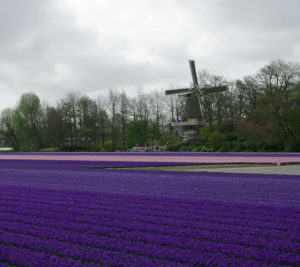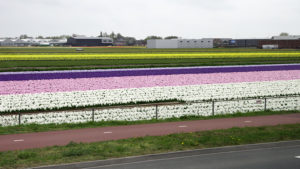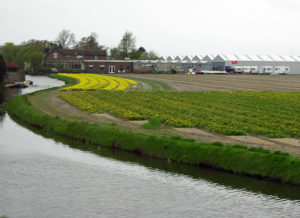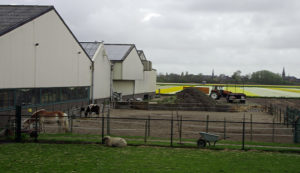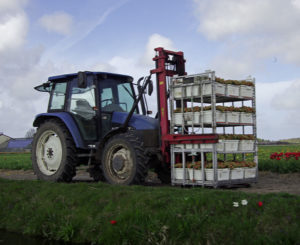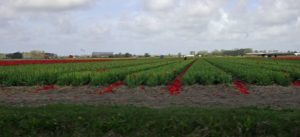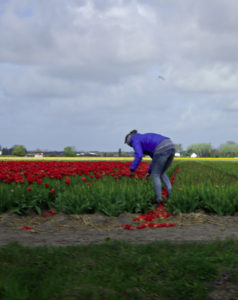The Netherlands produces about 60% of the world supply of bulbs.These are a popular tourist attraction with many people visiting the Netherlands in the spring to see the bulb fields.
Tulips were imported into Holland from the present day Turkey in the C16th where they were particularly popular in the court of Suleiman the Magnificent. The Austrian Ambassador brought back a collection of bulbs and seeds and gave some to his friend the botanist Carolus Clusius. He took his collection of tulips with him to Holland when he fled from religious persecution in Austria. The bulbs thrived in the Dutch climate.
Carolus Clusius wrote the first major book on tulips in 1592. They became so popular his garden was raided and bulbs stolen on a regular basis. Tulips rapidly became a status symbol, and tulip mania began, with variegated or frilled varieties commanding the best prices. Bulbs were sold for enormous amounts of money, often while they were still in the ground and before they had flowered. They could often pass through a series of hands with the price increasing at each sale. Everyone was desperate to cash in on their popularity and property and family jewels were traded in exchange for tulips. Bulbs were commonly traded for more than ten times the annual income of a skilled artisan. The record price of 10,000 guilders was paid for a single tulip bulb in 1637. The bottom suddenly fell out of the market in 1637 when speculators could no longer afford the cost of the bulbs. Many of the population were left financially ruined. The tulips slowly regained their popularity in the C19th. The Netherlands is now one of the largest world exporters of tulips.
Today bulbs are grown commercially, particularly in the northern provinces of the Netherlands where the sandy clay soils and maritime climate provide optimum conditions for their cultivation. As well as tulips, hyacinths, daffodils and narcissus are also grown. The bulbs are planted in long narrow strips to allow machinery to run between them. Fields are irrigated using water from the surrounding dykes.
Most of the growers are bulb producers rather than growers supplying the cut-flower market. This means the heads of the flowers are removed so all the plant’s energy goes into producing more bulbs rather than seed production. The petals are left to be ploughed back into the soil.
Once the leaves have died down, the bulbs are lifted and dried. The largest bulbs sold and the smaller bulblets are replanted in the autumn to produce bulbs for next year.
The process can be seen in this “youtube video “:https://www.youtube.com/watch?v=Z_CYJO2rbsg of Maliepaard Bloembollen, who is one of the largest tulip growers in the country.
We had been talking for years about visiting the Dutch Bulb Fields, but somehow it never got to the top of the list. I decided this was the year to do it and booked ‘Springtime with Holland’ with Saga Holidays. It was definitely worth the forty year wait!
All my pictures of Springtime in Holland can be found “here.”:http://wasleys.org.uk/eleanor/otherholidays/holland/index.html
